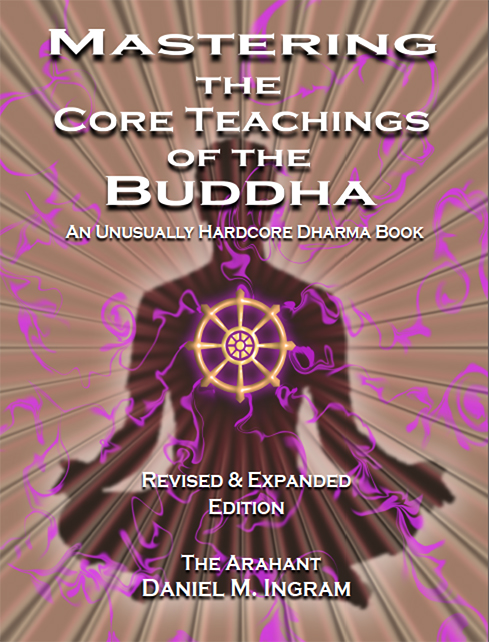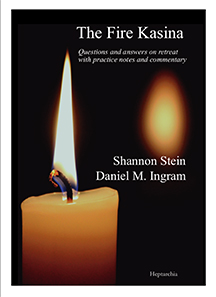12. Daily Life and Retreats
← 11. On Teachers | 13. A Few Odds and Ends About Retreats →
Related to sits are the worlds of retreats and monasticism and how these contrast with “daily
life” or the lives of “householders”, who, for those not steeped in Buddhism, are neither monks nor nuns. Each life path has its own challenges, but many of them overlap and the differences may be more a question of degree.
Now, it is true that the battle is not always to the strong, nor the race to the swift, but that’s the way to bet. In other words, those who: 1) do lots of practice in daily life; 2) go on more and longer retreats; 3) are more consistently able to concentrate and investigate quickly and precisely; 4) pay attention more often during their daily activities, and; 5) have their morality trip more together, are, on average, more likely to make quicker progress.
When on retreat, people can practice nearly all day in settings that are designed to facilitate clear, precise inquiry and depths of meditation. Why so few people take advantage of these incredibly optimal circumstances when they go on retreat is beyond me, and I will spend some time discussing that later. The point is that doing proper practice on retreat is highly conducive to quicker and deeper development. If you go on retreat, make good use of that precious time.
There is a significant difference between the experiences of people who do retreats halfway and people who wholeheartedly follow the instructions all day long. In my experience, there is no comparison between retreats I have done when I really powered the investigation from the time I awoke until I went to sleep at night, effecting quick and profound progress, and when I instead took breaks, checking out of the technique to “process” my issues or cogitate over meditation theory, slowing my progress. While many people think that retreats are for more advanced practitioners, I think that a few retreats done very early in our practice can really jumpstart things, allowing us to make much better use of meditation time off-retreat. I began Buddhist meditation practice with a nine-day intensive retreat and I am glad I did, as it taught me a lot and saved me much wasted effort.
I often think of the momentum that retreats generate in terms of rolling a boulder up and over a hill. If you get a long running start, pushing hard the whole way, you are more likely to be able to get the boulder rolling fast enough so that it rolls over the hill in one straight shot. If you push intermittently or half-heartedly, the boulder is likely to roll back when you get to the steep part of the hill, but you have worn the hill down a bit, and you may also be a bit stronger for the exercise. Thus, it is possible to wear down the hill given enough time, but it is much faster to simply power over it the first time and move on to the next hill. I know of no obvious benefits from slow practice that fails to gain some footholds in the territory of concentration or insight.
Those who take the “wear down the hill” approach may eventually lose faith and interest, having done much work to little effect. Those who really apply themselves and cross a few hills early on through focused and consistent effort, such as retreats or solid daily life practice, will have more of a sense of accomplishment and empowerment, and may have even put in less total time and effort than those who tried to wear down the hill. This irony should not be lost on those who want to be smart about developing their meditative skills.
For example, let’s say that you could allocate 365 hours out of one year to formal meditation practice. Given a choice, I would be more inclined to take half of those hours, 182.5, and do a ten-day retreat practicing hard and consistently eighteen hours a day with minimal breaks at the beginning of the year, and then spend half an hour meditating each of the other days of that year. I would be much more likely to cross into some interesting territory early on and overcome some of the initial hurdles than if I spent one hour each day of that year practicing well. The amount of time and effort is the same, but the effect is likely to be quite different.
Another thing about momentum is that it builds slowly and fades rapidly. What does this mean? Imagine that you are running seven miles per hour on an extremely long moving walkway, like one you would find in a gigantic airport, but the long moving walkway was moving the opposite direction at six miles per hour. Thus, for each hour you run you gain a mile. However, if you stopped running for ten minutes, you would end up a mile behind. Meditating on retreats is just like that. If you want to build momentum, don’t take pauses in the practice, as they will cost you much more than you think they could. Stopping for ten minutes to slack off after an hour sit might cost you all the momentum you gained during that sit and perhaps more!
Be mindful every friggin’ second from the moment you get up to the moment you go to sleep and in all transition periods—getting up off the cushion, brushing your teeth, walking to the meditation hall, eating, bathing, peeing, dressing, etc.—those who make use of every moment and every context will make vastly more progress, on average, than those who don’t, even if those other people are still doing the same walking and sitting sessions. When applying this sort of advice, be sure to keep the seven factors in mind and balance them skillfully.
← 11. On Teachers | 13. A Few Odds and Ends About Retreats →

